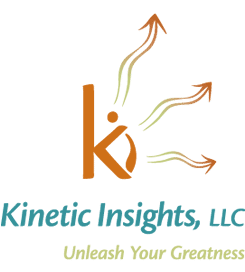As I mentioned in my previous blog “Tis the Season,” strategic plans only have value if they are executed. What good is a plan on the shelf? If you’re a leader who is feeling a little trepidation about planning based on less than stellar execution in the past, you’re one of many. While there is no silver bullet for successful execution, there is a lot that can be learned from leaders with deep experience, consultants with broad organizational exposure, and academicians who study real organizations to find what works best. I’ve scanned many resources and am providing three summaries with a practical edge.
The Secrets to Successful Strategy Execution
If you are wondering whether your organization is ‘execution able’ you will find guidance in this article. Based on extensive surveys, the authors identify 4 essential building blocks for successful execution. Each building block comprises several organizational traits, or tangible operating practices. These are ordered from highest to lowest impact.
- Establish clear decision rights:
- Managers know where their responsibilities for decisions and actions start and where they end. No fuzzy lines; no micro-managing. Clear responsibility and accountability. To amplify the impact of clear decision rights, establish a practice of ‘eating your own home cooking’ (keeping managers in their roles long enough to experience the impact of their actions). This enables learning from one’s decisions, both good and bad, and is a valuable element of development.
- Facilitate a climate and processes for open Information flow:
- The most critical factor is that managers have access to the information needed to understand the impact of their decisions, including the metrics for the drivers of their business. Another trait of organizations that execute successfully is that information flows freely up, down, and across the organization. Information about the competitive environment flows to the top quickly.
- Motivation:
- Most noteworthy of this building block is that performance is the baseline for all rewards, strongly influencing promotions and compensation.
- Structure:
- Does it strike you that structure – frequently the first step in aligning the organization with new strategies – is the lowest impact building block for execution? In my experience, restructuring is the automatic solution to redefine scope of responsibility and accountability, and to ensure ‘appropriate’ information flow. But, this is highly disruptive and has only short-term impact. Why not just address those factors directly to optimize execution?
Defining Strategy, Implementation, and Execution
I recently facilitated a strategic planning process with a team of leaders. The CEO struggled with the value of strategic planning, stating 1) it is predictable that unexpected (and unplanned) opportunities will arise, and 2) the business environment is volatile. She argued, “There is a substantial risk that the plan will either become irrelevant OR fail to capture attractive opportunities.” Agreed – neither is a desired outcome of a strategic plan. This question begs the need to refine one’s view of both strategic planning and successful execution. Should a strategic plan dissuade organizations from responding to opportunities, or does it provide boundaries for which opportunities to chase? In my way of thinking, it’s the latter.
“I define (execution) as the decisions and activities you undertake to turn your implemented strategy into commercial success. To achieve “execution excellence” is to realize the best possible results a strategy and its implementation will allow.” – Ken Favaro
I recommend this article to stimulate your thinking on how the continuous interplay of strategy, implementation, and execution can optimize your business results. This will prevent having an irrelevant plan on the shelf. By the way, Favaro is a strategy wonk with a bit of an obsession on terminology. Don’t let it distract you from the key point of the article.
Coherent Strategy and Execution – An Eye-Opening Parable
Told through the lens of a new CEO who struggles with transforming himself as a leader while transforming his company, this book offers deep insights for organizational leaders. If you’re looking for a book that connects mission, vision, strategies, leadership, execution and culture, this one’s for you.
As described by Amazon.com: How cohesive is your organization?
- Do your company’s executives and employees truly appreciate the passion and purpose behind the company?
- Do your company’s management philosophies and strategies leave room for ambiguity? Are employees oblivious of the strategy?
- Do the teams clearly define the work processes to ensure flawless coordination? Do they update the work processes to reflect the ever-changing strategies?
- Are internal politics and egos undermining success? Has the company proactively cultivated the right culture?
- Is the company’s execution in-sync with its strategy?
I found this book to be a quick and enjoyable read that outlined a systematic process for developing a cohesive organization. While the process doesn’t need to be applied in its entirety if some of the elements are already developed in your organization, I encourage you to not pluck out and apply random elements to save time. It will not accomplish the cohesiveness you desire.
At Kinetic Insights, our PathFinders are skilled in helping leaders unleash the greatness in themselves and in their organizations. Call or email us for a quick discussion that just might put you and your team on the path to significant change.
Kristi Thompson, a seasoned professional with more than 25 years experience, devotes herself to aligning people and processes to meet strategic goals with direct impact on an organization’s bottom line.











Leave A Comment